Bathysphere (for KM3NeT)
2019-2021
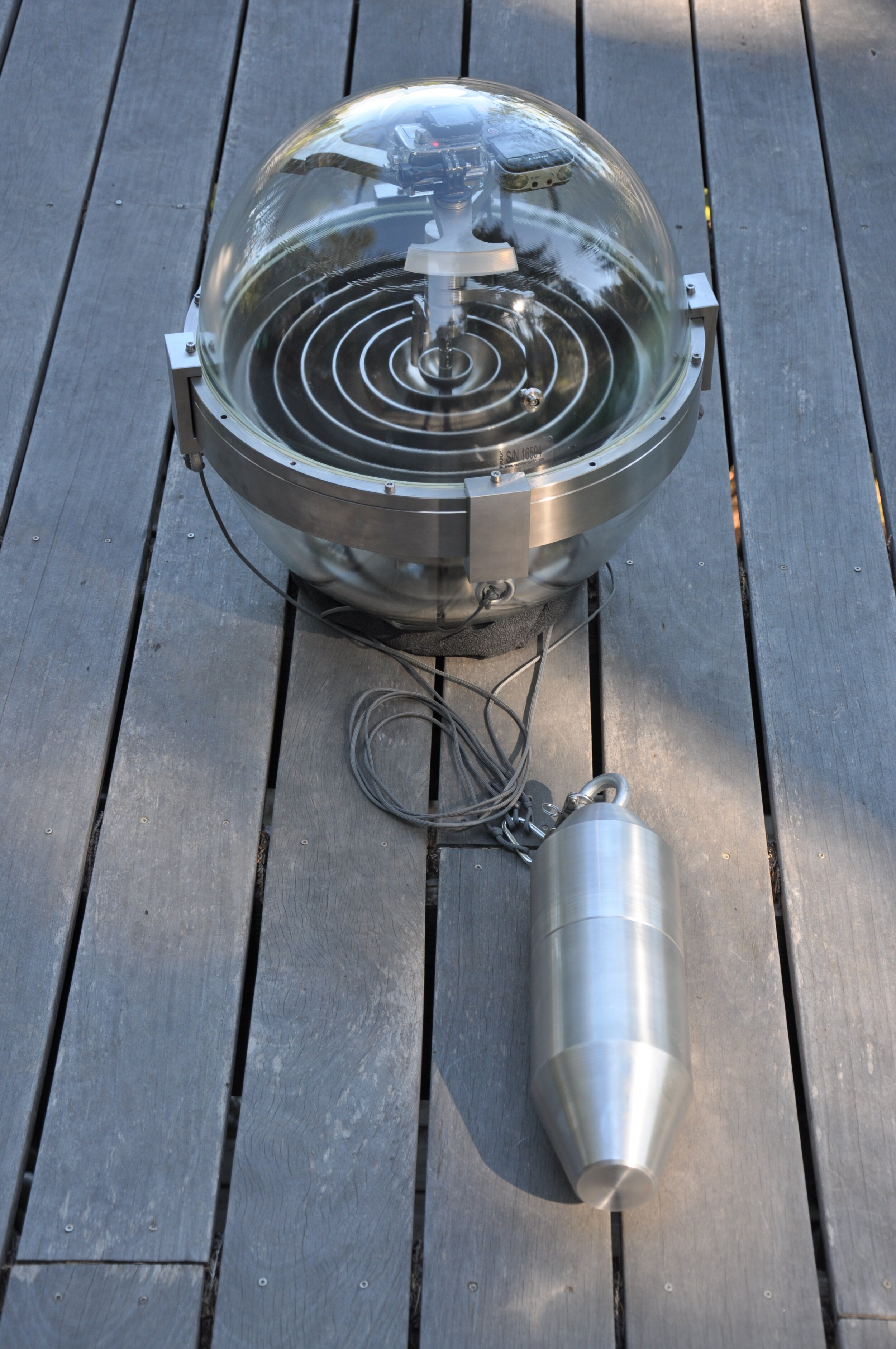
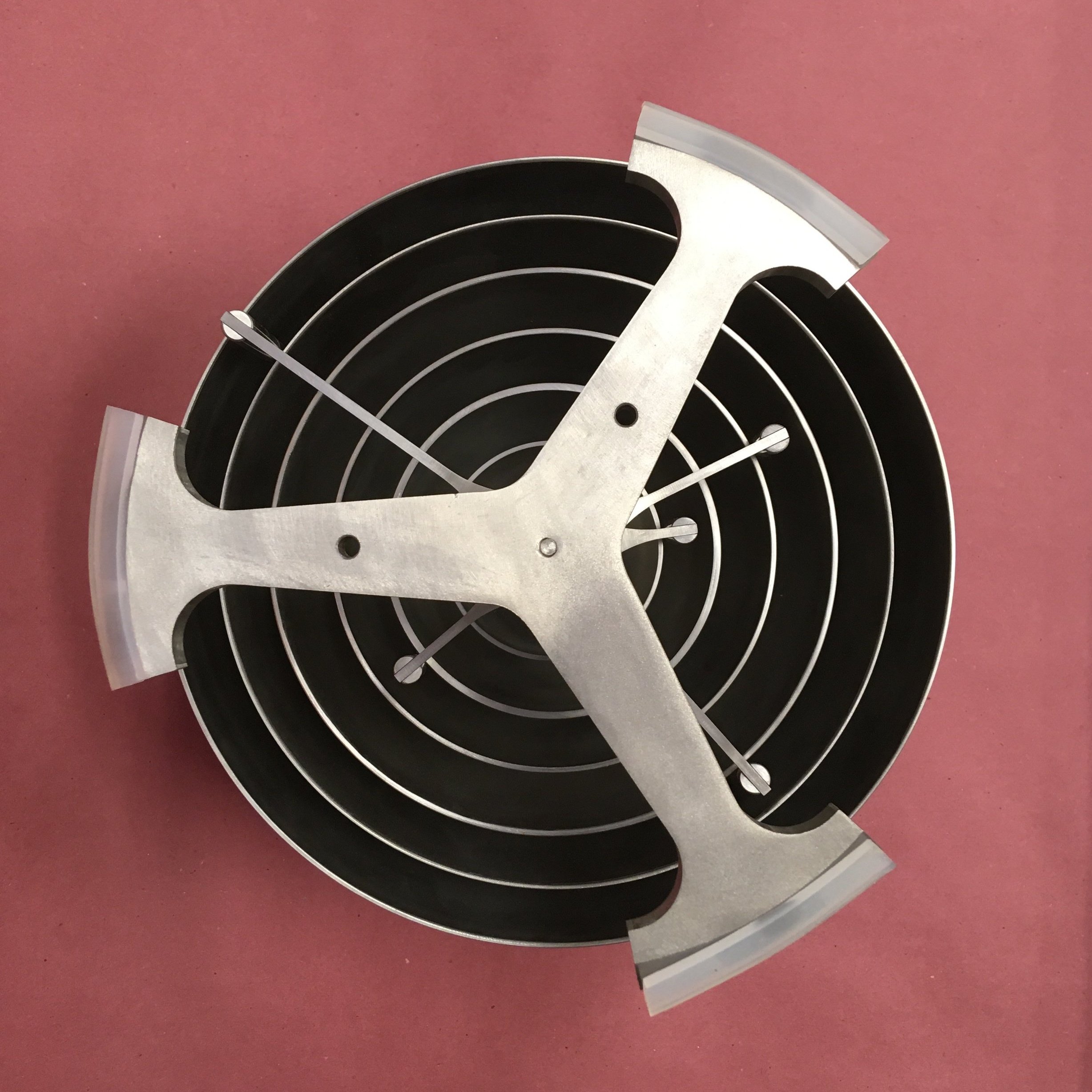
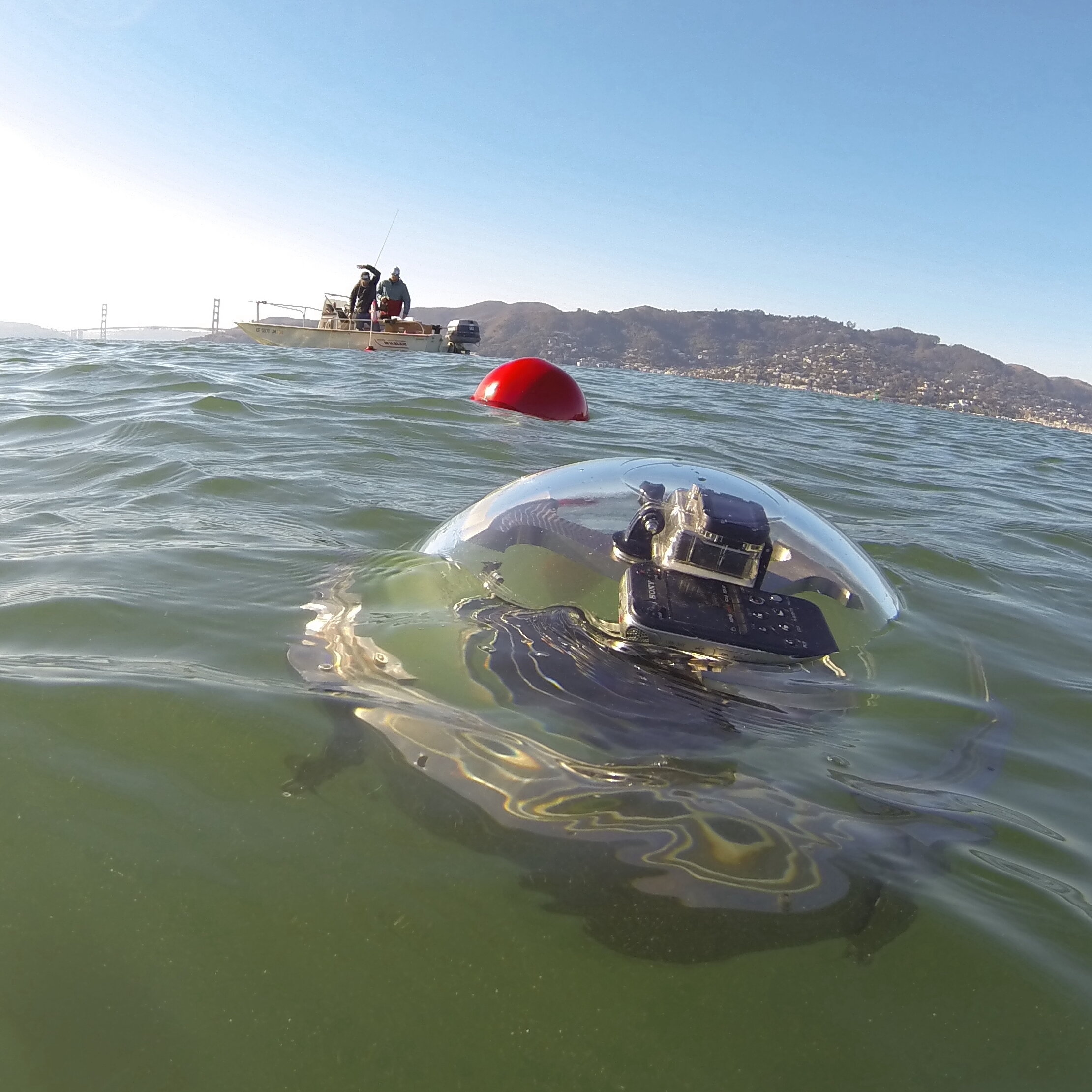
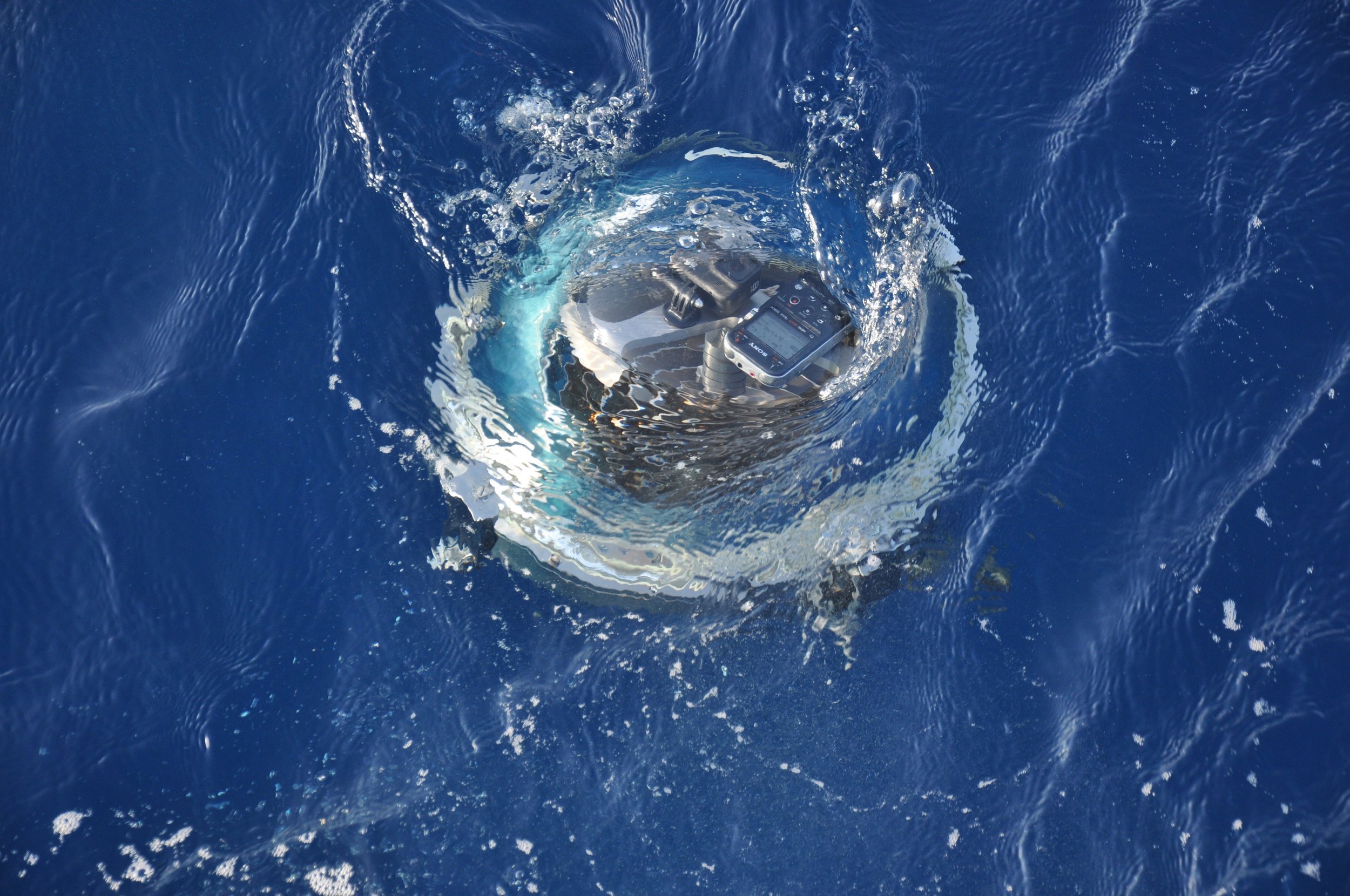
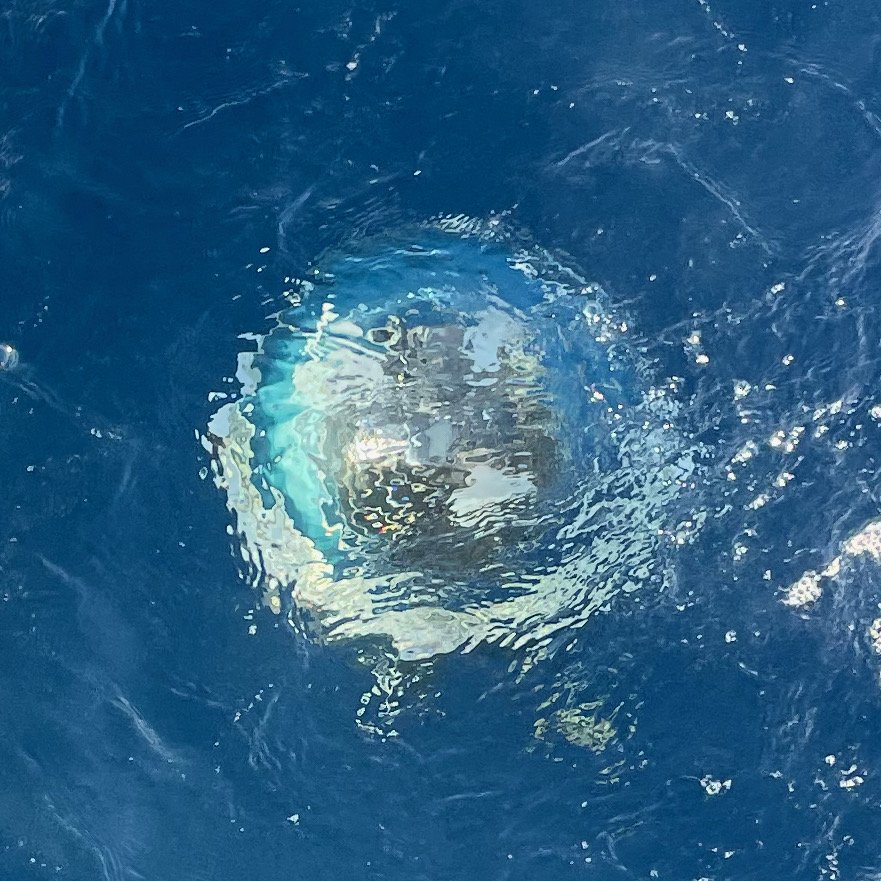
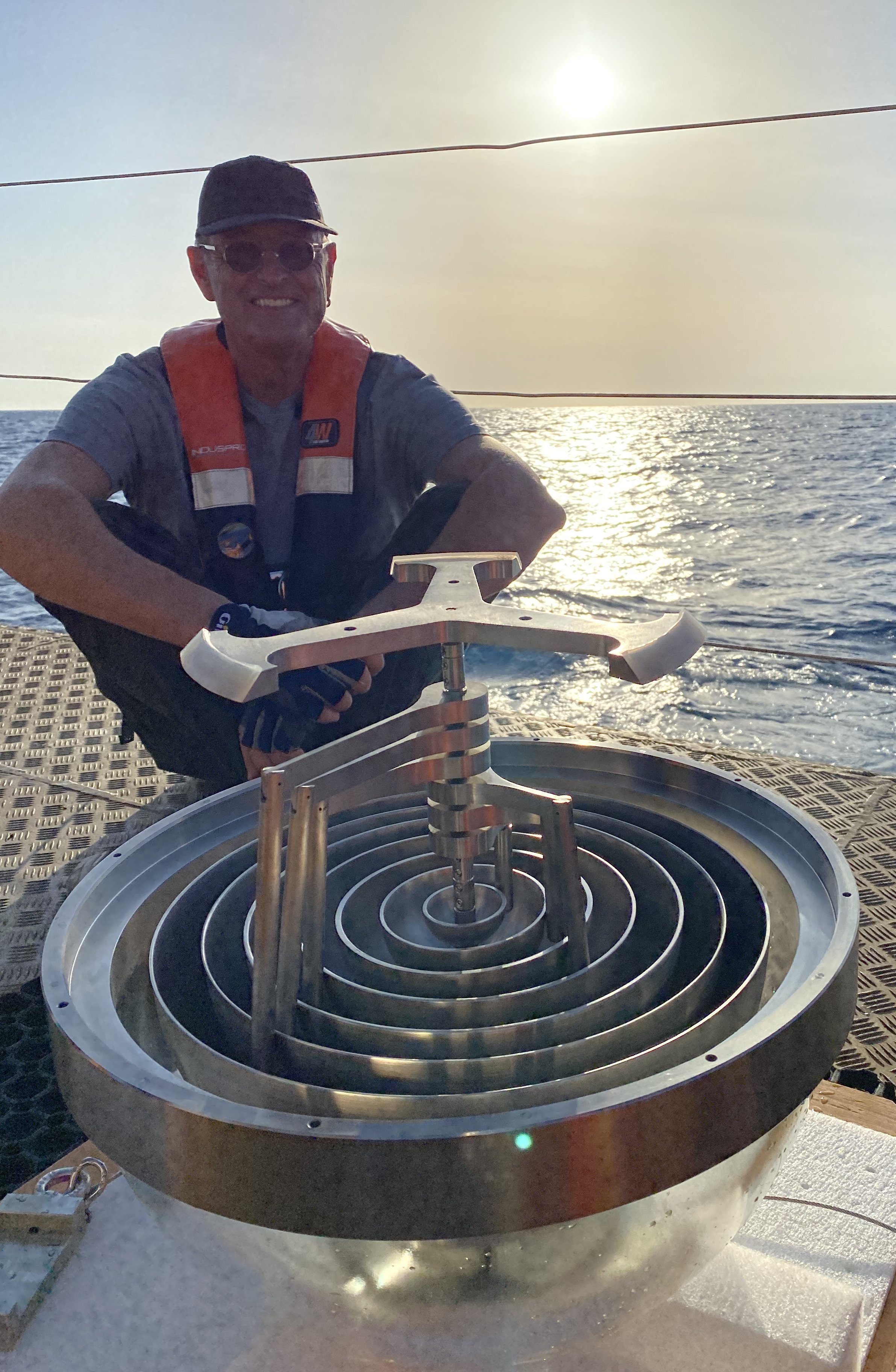
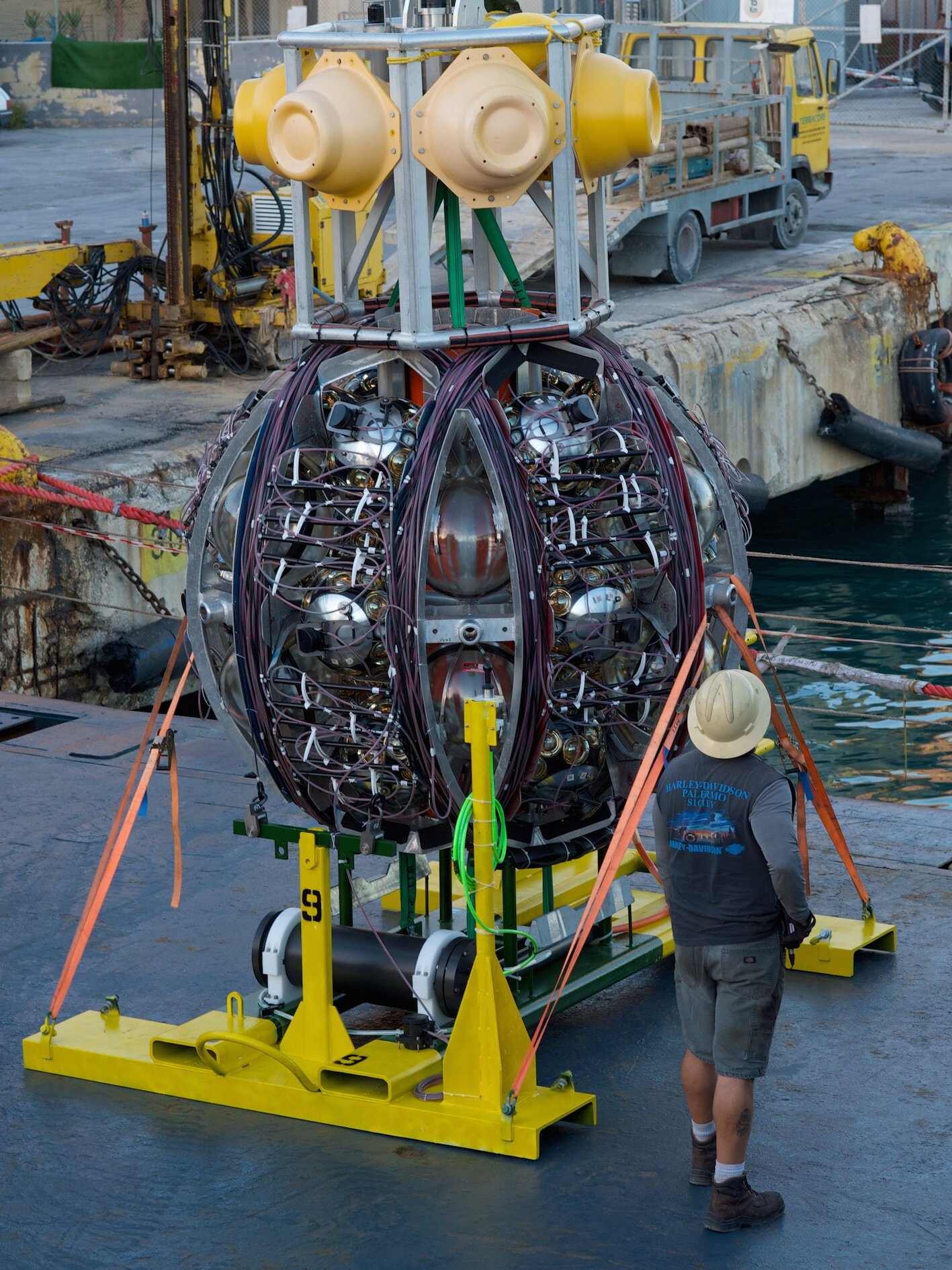
Mixed media (glass sphere, titanium, stainless steel, aluminum, digital sound and video recording devices, amstel line, bouy). 17” x 16” x 16” (43cm x 40cm x 40 cm)
The Bathysphere (for KM3NeT) is an idiophonic instrument deployed in conjunction with the KM3NeT Neutrino Observatory located deep in the Mediterranean Sea off the coast of Marseilles, France. It operates on the surface and at depth to transduce water oscillations into sound.
KM3NeT (the Cubic Kilometer Neutrino Telescope) is a European particle astrophysics research infrastructure located at several sites deep in the Mediterranean Sea. When fully completed, KM3NeT will search for neutrinos from distant astrophysical sources like supernova remnants, gamma-ray bursts, supernovae or colliding stars, and will investigate the fundamental properties of neutrinos. It will also be used to understand the dark matter in the universe. KM3NeT houses instrumentation for monitoring the deep-sea environment used by other scientists working in marine biology, oceanography and geophysics.
The Bathysphere was first deployed near the ORCA array of KM3NeT in September 2021. The Bathysphere highlights the craftsmanship involved in developing, creating and deploying scientific instruments and utilizes one of the exquisitely crafted glass pressure housings used for the KM3NeT’s Optical Modules (DOMs).
Special thanks are due to my colleagues Dr. Gwenhaël de Wasseige, Dr. Paschal Coyle, Paolo Salvagione and Lawrence La Bianca for their advice, critique, enthusiasm, and support throughout this project.